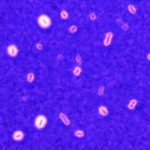Life Sciences [q-bio]. Universite Paris Cité, 2022. English. ⟨NNT : ⟩
Genetic exchanges with other individuals drive the adaptation of many bacteria. They include the acquisition of novel genes and the spread of favorable alleles by horizontal gene transfer and homologous recombination. These exchanges are mediated by mobile genetic elements such as plasmids and phages, and can lead to the gain of new functionalities like antibiotic resistance or to the acquisition of virulence factors. One particular element present in many bacterial cells – the capsule – is thought to both affect the rates of genetic exchange and to rapidly evolve through them. The capsule is present in all high-priority multidrug-resistant nosocomial pathogens ESKAPEs, and represents the first structure to cross for virions and conjugative systems. In this thesis, I aimed at characterizing the interplay between horizontal gene transfer and the bacterial capsule. I used Klebsiella pneumoniae as a model, and combined combined several approaches including comparative genomics and phylogeny, as well as gene transfer assays and serotype swap mutants. Overall, this thesis sheds light on the impact of the cell envelope composition on bacterial evolution, and show that capsules are gatekeepers for mobile genetic elements.
Comment la capsule protège la cellule, façonne les échanges génétiques et influence l’évolution bactérienne. Les échanges génétiques avec d’autres individus sont à l’origine de l’adaptation de nombreuses bactéries. Ils comprennent l’acquisition de nouveaux gènes et la propagation d’allèles favorables par transfert horizontal de gènes et recombinaison homologue. Ces échanges sont médiés par des éléments génétiques mobiles tels que les plasmides et les phages, et peuvent conduire à l’acquisition de nouvelles fonctionnalités comme la résistance aux antibiotiques ou à l’acquisition de facteurs de virulence. Un élément particulier présent dans à la surface de nombreuses cellules bactériennes – la capsule – affecte les taux d’échange génétique et évolue rapidement à travers eux. La capsule est présente dans tous les pathogènes nosocomiaux multirésistants de haute priorité ESKAPEs, et représente la première structure à traverser pour les virions et les systèmes conjugatifs. Dans cette thèse, j’ai cherché à caractériser l’interaction entre le transfert horizontal de gènes et la capsule bactérienne. J’ai utilisé Klebsiella pneumoniae comme modèle, et j’ai combiné plusieurs approches, notamment la génomique comparative et la phylogénie, ainsi que des experience de transfert de gènes et des mutants exprimant different sérotypes. Cette thèse met en lumière l’impact de la composition de l’enveloppe cellulaire sur l’évolution bactérienne, et montre que les capsules agissent comme des gardiens du transfer horizontal de gène.


